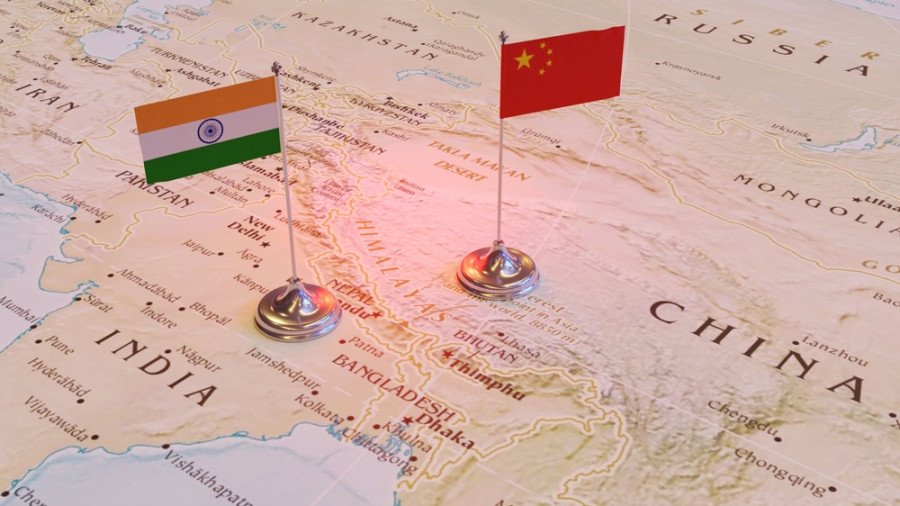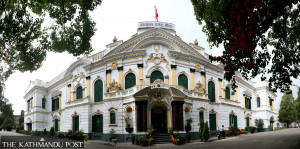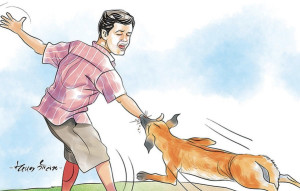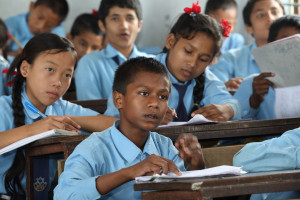Columns
Nepal as a land-linked country
Together, Nepal, China and India can create sustainable tourism opportunities.
Hikmat Singh Ayer
Since ancient times, Nepal has maintained trade, commerce, and cultural ties with its immediate neighbours—India to the south and China to the north. These connections have shaped the region’s socio-economic and cultural links, providing significant opportunities for further development.
Nepal-China bilateral trade and commerce relations started on August 1, 1955. The by-land trade between Nepal and China began in 1965 through Zhangmu (Khasa) and Sindhupalchowk’s Kodari, Tatopani route, and flourished for 42 years between 1972 to 2014. Trade was mainly done through National Trading Company Ltd and a few large trading houses. All Chinese goods, mainly electronics and utility products such as umbrellas, torches and clothes, were imported to Nepal. Exports to China included edible oil and herbs. At that time, networking between the two nations was limited and people-to-people contact was minimal.
An economic turning point occurred in 1992, when Nepal became a member of the World Trade Organisation (WTO) and adopted privatisation policies. The Privatisation Act of 1994 marked a new era as the Government of Nepal began intervening in failing public enterprises, many of which were transformed into private limited companies. The private sector has expanded its business with China and India, paving the way for new business opportunities. Their expansion is not limited to a single trade centre in Lasha (China) but extends to other cities in China, such as Guangzhou, Kunming, Beijing and Shanghai.
To expand its trade business with China, in 2017, the government of Nepal signed the Belt and Road Initiative agreement. A year later, Prime Minister KP Sharma Oli’s visit to China sealed the agreement to open up two new trade corridors in Eastern Nepal: Kimathanka in Sankhuwasabha and Tiptala in Taplejung, with China to build a north-south link for trade and commerce between the two countries.
President of the People’s Republic of China Xi Jinping’s visit to Nepal in 2019 resulted in an agreement to open three new north-south economic corridors in the Koshi, Gandaki and Karnali regions. These new routes, along with existing Kodari and Tatopani trading routes, are expected to add a new dimension to trade, commerce and people-to-people links between the two nations.
These north and south nations' corridors will open a new dimension of triangular trade and regional connectivity, fostering trilateral trade and commerce between Nepal, China and India. The Trans-Himalaya multi-model connectivity network, which envisions Bangladesh and Bhutan, can expand Nepal’s trade, creating a broader and more integrated regional business environment.
Besides trade and commerce, Nepal’s tourism has significant potential with China. In 2001, Nepal was declared an Approved Destination Status (ADS) by China, allowing Chinese tourists to visit Nepal in organised groups through designated travel agencies. This ADS status provided several benefits to Nepal’s tourism industry. It allowed Nepal’s tourism companies to market the country as a destination for Chinese tourists, which in turn led to a significant increase in the number of Chinese tourists visiting Nepal.
According to the Ministry of Culture, Tourism and Civil Aviation (MOCTCA), the number of Chinese tourists visiting Nepal increased from 7,412 in 2001 to a peak of 169,543 in 2019. As of 2024, the number has recovered to 101,879. The Government of Nepal started issuing permits to travel to Tibet by the Tatopani border in the early 90s. Since 2001, the Tatopani route has become a popular way, especially for Indian tourists and pilgrims visiting Mount Kailash and Lake Mansarovar. Prior to Covid-19, approximately 30,000 Indian pilgrims travelled to Mount Kailash and Lake Mansarovar in China via Nepal’s three borders: Kodari, Rasuwagadi and Hilsa.
The Hilsa route was the most popular way to visit Mount Kailash and Lake Mansarovar before the pandemic. Thousands of Hindu pilgrims from India come to Nepalgunj in Southwestern Nepal every year to fly to Simikot, the shortest route to Mount Kailash. Huge investments in the hotel sector and other facilities were made by the private sector in Nepalgunj and Simikot in anticipation of a future surge in tourists along this route.
However, the past six years have been challenging for tourism entrepreneurs due to China’s intermittent border closure for third-country tourists, allowing entry only to Nepali citizens. The Chinese government’s announcement to reopen the Mount Kailash Yatra from June 30, 2025, has revived lost hope among tourism stakeholders. This reopening is expected to revive the pilgrimage flow of Indian tourists through the Hilsa and Rasuwagadi entry points. Such development will open up the business link between India, Nepal and China, enhancing people-to-people networking, further strengthening business relations.
This year marks the 70th anniversary of Nepal-China bilateral ties.
Since last year, the Chinese Embassy in Nepal has actively extended its cooperation in organising various cultural and sports events in Pokhara and Kathmandu. Such events, such as the Dragon Boat Race, marathon events in Pokhara, cultural programmes in Kathmandu and the lighting of meditation lamps in Kathmandu, have been organised to showcase Chinese heritage and its age-old art, culture, music and cuisine traditions.
To further strengthen these relations, Nepal seeks the Chinese government’s assistance in developing the six provincial land border roads connecting Nepal and China, from Tiptala and Kimathanka in Eastern Nepal to Tatopani and Rasuwagadi in Central Nepal and Korola and Hilsa in Western Nepal.
Strengthening air connectivity remains another key priority. Nepal needs the Chinese government’s support in advancing provisional government airlines such as Sichuan Airlines and China Southern Airlines to connect Pokhara International Airport and Gautam Buddha International Airport with regional Chinese markets.
All-season roads connecting Nepal’s borders with China and India will open up immense potential for trade and commerce between the world’s second and fourth largest economies. This will position Nepal as a facilitator, a vital transit hub, and a spiritual, tranquil resting place for tourists from both countries.
In addition to China, two ancient civilisations that share borders, values and cultural heritage—Nepal and India—are uniquely positioned to spearhead South Asia’s shift towards meaningful and sustainable tourism. By working together, these countries can build a tourism infrastructure that respects the past, enhances the present and protects the future. As Nepal is a sacred geography for millions across South Asia, religious tourism has immense potential, especially between Nepal and India, due to shared spiritual traditions.
Lumbini, the birthplace of Lord Buddha, is a beacon of peace and pilgrimage, attracting global Buddhist followers. Hindu shrines like Pashupatinath, Muktinath, Janakpur, Haleshi, Pathivara and Kaligandaki hold deep religious significance for Indian pilgrims. Cross-border initiatives such as the Greater Buddhist Circuit—connecting Lumbini with Bodh Gaya, Sarnath and Kushinagar—and the Ramayana Circuit are steps in the right direction to connect Janakpurdham and Ayodhya to develop spiritual tourism corridors connecting both nations.
Joint adventure hubs, not just for Everest and Annapurna, lesser-known treks like the Mundum Trek, Khaptad, Rara, Dolpo, Api Himal and Saipal Himal base camp offer low-impact exploration of untouched regions. Cross-border festivals, cross-border National Parks and Indo-Nepal tourism packages could amplify each nation’s appeal.
By working together, China, Nepal and India can promote eco-adventure circuits, such as rafting and other water-based activities along the Mahakali and Tista Rivers or plan Himalayan vehicle rallies from Lasha-Kathmandu to Delhi. Shared Himalayan ecology deserves shared stewardship.
Besides strengthening infrastructure development ties, Nepal, China and India should continue to deepen their soft diplomacy of art, music, food and cultural exchanges. Their concerted efforts will play a vital role in transforming landlocked Nepal into a land-linked country.
Ayer is a senior director at the Nepal Tourism Board.




 10.12°C Kathmandu
10.12°C Kathmandu













%20(1).jpg&w=300&height=200)

